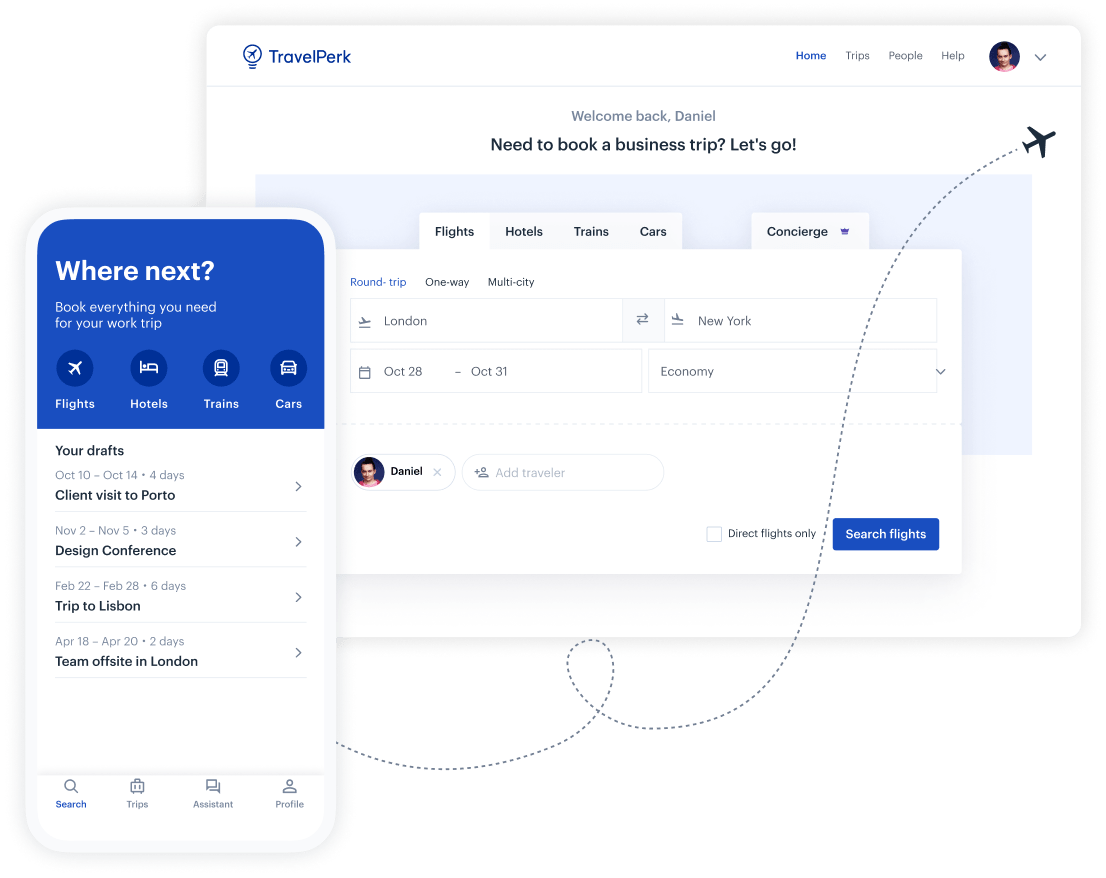Your guide to writing meal allowance policies for employees
When a company’s employees travel for work, meal expenses are one of the most common costs. A good meal reimbursement policy is an important part of a business travel policy. It will save your business both time and money. At the end of the day, it will also ensure that employees do better business.
In this guide we share why a meal allowance policy is so important and what it should cover.

What is a meal allowance policy? Why should I have one?
A meal allowance policy regulates the actual cost that employees are allowed to spend when on business travel (also known as a meal stipend).
If your employees travel for a business purpose, it’s important that they can refer to a meal allowance policy. A good meal allowance policy makes business travel easier and more comfortable. It also explains how employees can submit an expense report. This makes it easier for your finance department to track these business expenses correctly.
Keep in mind that many countries regulate meal allowances for corporate business travelers. Even when there’s no legal requirement, it makes sense to regulate your employees’ travel expenses.
What should a meal allowance policy include?
Every company is different, and we know yours is unique. This is why it should have its own meal allowance policy, based on its needs and preferences. However, these are some elements that all meal allowance policies share:
1. Introduction
Here’s where you include the purpose of the meal allowance policy. Provide a clear definition of what is considered a travel meal and a travel meal allowance. What actual expenses are included?
2. Allowance amounts
In this section you will specify the amounts that employees are allowed to spend. These amounts can vary depending on the destination and the trip duration. This is why you should specify a different reimbursement amount for each destination that employees usually visit. You should also specify a different allowance for different trip durations. A day of travel will be different than overnight stay.
For some countries, it makes sense to specify a different allowable amount for different cities. If you still have doubts about allowance amounts, keep reading as we share more tips in the next section.
3. Payment method
Do employees pay using the company's credit card? When should they use their own credit card? Which payment method will the company use for reimbursement?
4. What is not included
We recommend specifying what kind of expenses are not included in your allowance. This will help avoid any confusion. Room service and alcoholic beverages are some of the expenses that companies often don’t cover.
A special policy may apply for business meals, that is when business meetings take place over a meal. Who will cover the cost of the meal in these cases? What is considered a business purpose? That should be detailed in a business meal policy.
5. Approval guidelines
If employees need to receive approval before the expense is made, it’s important to explain it clearly. You should also include the name of the person in charge of approvals. Is it done through a specific platform? Include the details to make it simpler.
6. Expense reimbursement process
Be clear about this process to ensure there’s good communication between employees and the finance department. Specify how the travel reimbursement should be requested.
Setting a deadline for the reimbursement request is important to avoid any issues. Be crystal clear about the documents that employees need to submit to request a refund. Make sure they understand the importance of itemized receipts. Do they need to include any other information in the expense report? State it here.
How to set per diem meal allowance rates when traveling for business
A lot of factors are involved when setting allowable amounts. Seniority, destination, and travel preferences are some of the most common. Some countries have specific regulations in place for per diem rates. This affects what classifies as meal expenses and how much of it can be reimbursed for tax purposes.
In the US, for example, a per diem allowance is regulated by the IRS. If your company is located in the UK, you should follow the HMRC’s regulations for “subsistence expenses”.
You should consider if your company will apply the official reimbursement rate amounts or not. It may be that the company wants to allow a more flexible budget. In this case, businesses will have to pay taxes on the price difference.
Final tips
Once your meal allowance policy is ready, make sure employees can access it. You can share it on the company’s intranet, send an email reminder, or mention it at the next company-wide event.
No matter how complete, there can always be questions. Make sure to include the details of the contact person that employees can send their questions to.


